 Tree Economics
Tree Economics
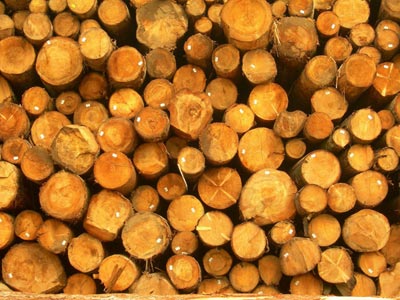
photo by Annadriel
The Old Model
“We think of trees as firewood, as pre-plywood, as unvarnished hardware floors. We have convinced ourselves that they are just inert stuff, standing there for twenty years until we get around to cutting them down. We are deluded.” — Brian Swimme, mathematical cosmologist.
As a result of this limited understanding, global deforestation continues on a massive scale. In the Amazon rainforest alone, an area the size of a football field is destroyed every second. At the current rate of destruction, the last remaining rainforests could disappear in less than 40 years.
What is the cost of deforestation? According to a 2008 EU study, it runs somewhere between $2 trillion and $5 trillion (€1.3-€3.4 trillion) annually.1 Consider the implications of forest destruction:
- Loss of biodiversity - it’s estimated that 1,000 species go extinct every week, largely due to habitat destruction, deforestation, and pollution
- With this loss of biodiversity, ecosystems (including the ecosystems of agriculture and human settlements) become increasingly susceptible to disturbances, in the form of pests, diseases, shifting weather patterns, etc.
- This extinction also prevents the discovery and development of countless medicinal products. Consider this: 25% of pharmaceuticals are derived from rainforest products, yet fewer than 1% of tropical plants have been scientifically studied.
- Thousands of years worth of knowledge of these plants has been passed down from generation to generation among the indigenous tribes of the rainforest. But as deforestation continues, these tribes are destroyed and their valuable knowledge lost. Since European colonisation began, the population of rainforest Indians has gone from 10 million to 200,000, with thousands of indigenous tribes displaced or killed. ‘Each time a rainforest medicine man dies, it is as if a library has burned down.’16
- Consider that €15 billion is spent annually on cancer-research and that 3/4 of the active cancer-fighting ingredients come from the rainforest.
- Effects on climate change - more than 20% of the world’s oxygen is produced by the Amazon Rainforest, and 15% of greenhouse-gas emissions are caused by deforestation worldwide.
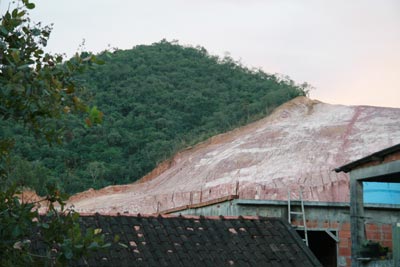
Deforestation in Rio De Janeiro - photo by Alex Rio Brazil
What drives people to cut down their forests, pollute their oceans and skies, strip-mine the Earth and plunder all its available natural resources? Economic pressure. The rainforest in Brazil is being bulldozed and chainsawed down for lumber, then burned and cleared by farmers to graze cattle to make hamburgers, even though if left standing it could provide much more food in the form of fruits, nuts, seeds, leaves, roots and vegetables. The above photograph shows a section of forest cleared by the government to access the clay beneath it. In many cases, especially during periods of high inflation when tax insentives make pastureland more valuable than forest land, forest is cleared just for investment purposes.12 One cause of this is the insatiable demand of the modern consumer. Another is the economic model of growth-at-all-costs, which values short-term gains that wreak long-term consequences.
Clearly, a new economic model is needed, which looks at the bigger picture, considers whole systems and interdependence, and favors long-term prosperity and resilience over short-term gains.
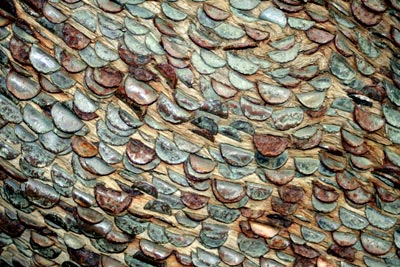
'Money does grow on trees' - photo by robpatrick
The Forest as Economic Model
In a naturally functioning forest, there is no need for external inputs - it is self-sufficient, and everything is recycled to its greatest capacity. The greater the diversity of the forest, the greater its resilience - that is to say, its capacity to withstand and adapt to changes. Trees are at the heart of a woodland ecosystem. Through their deep-reaching roots, they draw up water and trace minerals, and make these available to other plants. They filter the air and sunlight, creating more habitable conditions beneath. Their leaves fall and compost in the soil, creating a rich layer of humus that supports many layers of plant growth.

'Little Gem'
photo by Mr. Beaver
This multi-tiered system, built on mutual inter-dependence and diversity, allows the greatest number of species to inhabit an area, and functions at the greatest efficiency, with little or no waste created. The forest community is dynamic, and full of mutually-beneficial relationships. It can perpetuate itself indefinitely, growing continually stronger and more diverse. If only our economy would function as well!
An economy such as ours, built upon a once-abundant but rapidly-diminishing supply of fossil-fuels, is hugely wasteful. In its quest for efficiency, it has focused on industrialized production, creating what in ecological terms would be seen as a very fragile monoculture. Due to the pressures of lending and interest-rates, there is a need for expansion at an unnatural rate, which is achieved by focusing on short-term profits and depleting our natural resources quicker than we can replenish them. And we wonder why economic crashes and recessions are happening! They are the economic equivalent of ‘natural’ disasters that come as a result of deforestation. We have borrowed from the Earth, and now she is coming back to collect.
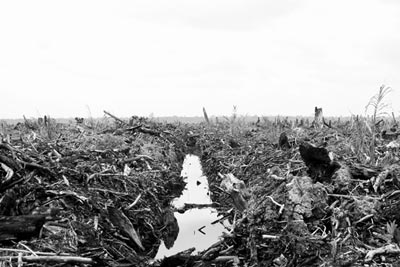
The Wrong Kind of Development:
Canal to drain the peatland, to allow the devastated forest to be burned
- photo by H Dragon
Ecology and economy are intimately connected. All growth and development, whether in the natural world or in our society, depends upon a few simple building blocks: sun, air, water, earth. Every bit of energy we use, whether to power our light bulbs and cars, build our homes, or grow food to empower our bodies, comes from the sun and grows upon the Earth. But the sun has its rhythms, and the Earth too. A plant cannot grow if it is constantly exposed to light, rain cannot constantly fall, and wind does not constantly blow. The life cycle of every living thing includes a period of growth balanced by a period of rest and renewal. Our economy is no different. The present recession has actually proven to be quite beneficial as far as the health of the planet is concerned. A pause in our habit of consumption has resulted in a falling rate of deforestation and pollution-heavy industrial manufacture. Does this mean that the growth of our economy and the health of the planet are irreconcilable? No; it merely shows us that our current model of growth and development is founded on the wrong principles and needs to change if we are to survive and truly prosper.

Neem leaf - photo by pranav
The Right Kind of Development
“Developments undertaken by governments do great harm to the environment and do not improve our lives … Development which plunders human resources – forests, land, water, air and food – is short-sighted and self-eliminating. Yet for many leaders, development means extensive farming of cash crops, expensive dams, luxury hotels, airports, big hospitals, heavily armed armies and supermarkets. These are the priorities in national budgets. Never mind that they may not reflect the needs of the people who, if asked, would prefer basic needs like food, shelter, education, clean water, local clinics, information and freedom.”
— Professor Wangari Maathi, Nobel Laureate.
“Societies can build their entire economies around trees: economies that are much better for people at large, and infinitely more sustainable, than anything we have at present. Trees could indeed stand at the heart of all the world’s economies and politics, just as they are at the centre of all terrestrial ecology … In the future of humanity, and of all the world in all its aspects, trees are key players.”
— Colin Tudge, author of The Secret Life of Trees.
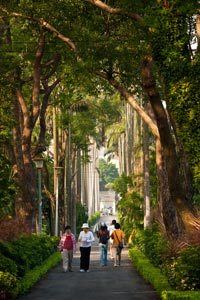
photo by Shenghung Lin
A society built upon living trees? The idea may sound strange to us, who are used to an economic model built on industrial manufacture, ecological exploitation, and an abundance of cheap oil. But many cultures all around the world have had trees at the heart of their economies, maintained them sustainably – those cultures that survived that is. Those cultures who deforested their land generally evacuated or exterminated themselves in the process.
Consider India: at the heart of every village was a well and a Neem tree. The Neem tree is often called ‘the village pharmacy’ because it delivers so many products for the village: it is anti-bacterial, anti-fungal, anti-inflamatory and insecticidal. Parts or extracts from the tree are used for soap, toothpaste, toothbrush, insect repellant, shampoo, fertilizer, animal feed, birth control, skin ointment, and to heal rashes, boils, ulcers, cuts, burns, scrapes, headaches, chickenpox, fevers, warts, acne, eczema and rheumatism. In addition, it provides shade and clean air like all trees, and a termite-resistant and sweet-smelling wood. No wonder then, that the Neem tree is named from the Sanskrit ‘nimbati syasthyamdadati’ which means ‘to give good health’, and also called ‘sarva roga nivarini’, meaning ‘the curer of all ailments’, and ‘arista’, meaning ‘perfect, complete and imperishable’!16
And for thousands of years, Indian spirituality had at its heart a respect for the sacredness of nature and the principle of environmental stewardship.
The Buddha defined a Forest thus:
“A peculiar organism of unlimited kindness and benevolence that makes no demands for its sustenance and extends generously the products of its life activity; it affords protection to all beings, offering shade to the axeman who destroys it.”

photo by Gret@Lorenz
We ought to honour the Buddha for his wisdom on ecology and economics, for including in his teaching the obligation of every individual to plant one tree at least every five years, and care for it. As long as this was observed, the whole of India was covered with trees, free of dust, with plenty of water, shade, timber, fuel, food, medicines, and other materials.
Two thousand five hundred years later, when India had lost most of its arboreal heritage the great economist E.F. Schumacher went to the Indian government to make the following simple practical suggestion:
“Just imagine you could establish an ideology which would make it obligatory for every able-bodied person in India, man, woman and child, to do that little thing – to plant and see to the establishment of one tree a year, five years running. This, in a five-year period, would give you 2,000 million established trees. Anyone can work it out on the back of an envelope that the economic value of such an enterprise, intelligently conducted, would be greater than anything that has ever been promised by any of India’s five-year plans. It would provide foodstuffs, fibres, building material, shade, water, almost anything that man really needs.”4
Sadly, the Indian government did not heed Schumacher’s sage advice. The Philippines, however, must have caught on, as in 1977, a law was passed forcing every capable man, woman, and child over the age of 10 to plant one tree per month for five years, with seedlings provided by the government.. Violation of this law results in the loss of a citizen's rights and a fine of up to $175. This has resulted in the planting of 360 million saplings per year, and the gradual reforestation of the country.

Wangari Maathi
photo by Martin Rowe
Professor and Nobel Laureate Wangari Maathi of Kenya, on the other hand, did not leave the decision up to the government. Recognizing that the plight of poverty among the Kenyan people was connected to the deforestation of the land, she founded the Green Belt Movement in 1977. Its aim was the reforesting of land which, among other benefits, would provide fuel for the poor and bring a halt to extensive soil erosion. The first time she came to the notice of officialdom was when she walked into the forestry ministry in the capital and demanded 15 million seedlings, which she got.
The Green Belt Movement urged, inspired and assisted communities in planting trees everywhere, with the result that over 30 million trees have been planted on school grounds, roadsides and open spaces, in Kenya as well as elsewhere in Africa. In Kenya alone, there are more than 600 community networks; and branches in 20 other countries. People are now harvesting the fuel and fruit from these trees; and springs have returned, which had once dried up. See ![]() Tree Warriors: Wangari Maathi
Tree Warriors: Wangari Maathi
In ancient Ireland too, trees were central to the economy of the people, to the extent that they were protected by law. Under Brehon Law, trees were classified in four groups: Nobles of the Wood, Commoners of the Wood, Lower Divisions of the Wood, and Bushes of the Wood, with misuse punished by fines appropriate to the status of the tree. In some cases the penalty for unlawfully felling a chieftain tree could be the same as the penalty for killing a human chief. These laws worked remarkably well, ensuring that woodlands were sustainably managed for over a thousand years before colonial practices began a steady deforestation that left less than 1% of Ireland covered by trees in 1900. See ![]() Trees & Ireland
Trees & Ireland
![]()
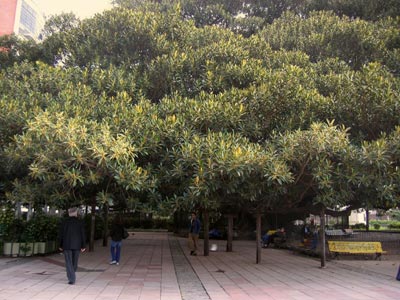
Part of a Single Huge Tree, Recoleta, Buenos Aires - photo by renatotarga
Trees & Cities
Rural areas and developing countries are not the only ones to benefit from trees. Cities and roadways are greatly enhanced by tree-cover. Consider the benefits of urban afforestation (drawn from US Forest Service research):5
-
Trees make motorists and pedestrians safer by reducing traffic speeds and creating safer walking environments by providing visual walls and distinct edges to sidewalks so motorists can better distinguish the road’s edge and better gauge their own speed.
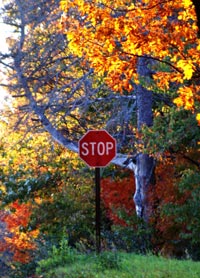
photo by CaptPiper
- Roadside trees also absorb pollution from tailpipe exhaust (which seriously contributes to illness as well as the Greenhouse Effect) and reduce the noise of traffic (which is pitched at such a frequency as to cause neural degeneration).
- Tree-lined streets are more pleasant to drive on and the perceived travel-time is quicker. There is a reduction in road rage, and this corresponds to an overall reduction in anger and acts of crime and violence in areas with high levels of greenery.
- Afforested areas are perceived to be more affluent; property values are higher and consumers are willing to spend up to 12% more in tree-lined districts.
- Road maintenance and drainage infrastructure is also made less necessary by the presence of trees.
- Globally, more energy is used in cooling than in heating. This is especially true in cities, where an abundance of asphalt and concrete create 'heat traps' which become unbearable in many cities during the summertime. Trees provide shade and respiration, dramatically cooling their surroundings and reducing energy costs.
- All in all, the cost-benefit analysis is staggering: for a planting cost of $250-600 (including the first 3 years of maintenance), a single street tree will return over $90,000 worth of direct benefits (and this doesn’t include aesthetic, cultural, and natural benefits) over the lifetime of the tree.
![]()
The Economics of Climate Change
“A mountain without a forest is an absurdity and it creates a serious illness of the Earth’s surface.”
— Dr E. Pfeiffer, agriculturalist.
As the dangers of Climate Change become increasingly apparent, so too does the need to take dramatic steps to halt and reverse the process before it’s too late. Human-caused carbon-emissions have been conclusively linked to the greenhouse effect, and have risen exponentially since the beginning of the age of fossil-fuels. Thankfully, governments and people all over the world are waking up to the importance of this situation and promising to take measures to reduce carbon and save the world.
In the effort to reduce carbon emissions, many strategies are being discussed: solar and wind power and other forms of renewable energy, increased efficiency in heating, cooling, electronics, and transportation systems, and ‘going local’ - all with the aim reducing one’s dependence on imported products. All these efforts are wonderful and necessary, but it’s key to note that deforestation represents 15% of annual greenhouse-gas emissions worldwide. This is more than all the world’s cars, trucks, airplanes, trains, and ships combined.6 Protecting and restoring forests is a much cheaper way to cut CO2 than switching to ‘green energy’, and provides just as many if not more long-term benefits and employment. For every $1 spent on forest protection and tree-planting, an equivalent of CO2 is reduced equal to that from $6 invested in emerging technologies.17 It would cost the average American only $90 a year to cover their entire carbon-footprint, if this money was spent on tree-planting.

photo by ecstatist
In addition to the well-documented role of trees and forests in carbon-sequestration and Climate Change, they provide many other climatic and environmental benefits to people. They act as atmospheric filters and water-regulators, cleaning our air and water and providing a habitable environment. They prevent droughts, floods, landslides, and other natural disasters. When one considers the incredible cost of natural disasters and the long-term detriments of pollution, it is clear that by preventing and reducing the scale of these things, trees save nations billions or trillions of funds. On a personal scale, a household receives €48,000 worth of air pollution control from a single garden tree over an average 50-year lifetime.8
With the abundance of talk about ‘carbon credits,’ ‘carbon tax,’ and other economic incentives to cut emissions and sequester Greenhouse-gasses, it is clear that woodland-protection and tree-planting are among the most intelligent, appropriate, ethical, and economically-sound activities we can do, both individually and nationally.
See ![]() Trees & Climate
Trees & Climate
![]()
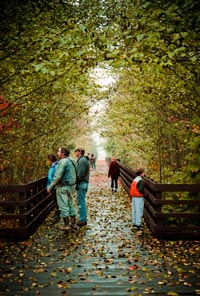
photo by simple insomnia
Priceless
Though the quantifiable benefits of trees and woodlands listed above are already staggering, there are just as many benefits to people which cannot have a price tag attached.
Consider inspiration - how many scientists, artists, poets, innovators, and spiritual leaders have gained their inspiration as a direct result of being amongst trees? [quote]
Consider health & well-being - when humans are deprived of the colour green, they become irritable, even violent. When children do not have adequate access to nature, they develop Nature-Defecit Disorder, resulting in an inability to focus and an overabundance of hyperactivity. Time immersed in nature is as important to the human heart and soul as exercise is to the body. And trees give not only to the soul, but to the body too! Woodlands offer not only a space for recreation, but also clean and purify our air and water, removing cancer-causing pollutants in the process.
![]()
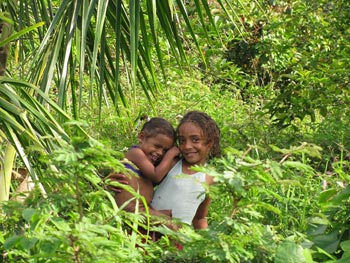
photo by mrcharly
Multi-Purpose Forestry:
The New Model
“The policy arena in which forestry operates is changing rapidly. The multi-functional model of forestry, delivering economic, environmental, social and cultural benefits, which has been evolving throughout Europe, represents the new paradigm. Forestry is increasingly expected to deliver public benefits including recreation, landscape, water quality, biodiversity and carbon sequestration.” - Dr Áine Ní Dhubháin9
It is known that commercial monoculture forestry (not only, but in particular, the mass-planting of non-indigenous conifers) is devastating to the environment and unfriendly to local communities, YET education in forestry remains geared to producing ‘experts’ whose life-long dedication is to this approach. While monoculture forestry yields a product which meets a demand and serves limited commercial interests, it is the very opposite of a forestry in which Earth and people really matter; and it is often conducted as if neither of them do. Clearly we need to explore and give expression to alternatives which are more if not wholly holistic in their approach. While taking full account of environmental factors – impact on soil, rivers, water table, wild life, climate, and so forth – considerations should also be given to how forests can serve local communities and economies.

‘Three Forests’
photo by ecstatist
Even the claim, often touted by the lumber industry, that conventional timber forestry provides an important source of employment and a valuable economic income, is exaggerated. The exact value of non-timber forest products (commonly called NFTPs) is difficult to calculate because they include so many products and industries. The thousands of NTFPs, are usually grouped into the categories of: medicinal plants, foods, flavors and fragrances, fibers, floral greens, decoratives, and saps and resins. Woodlands also provide habitat for countless animals whose presence and products are needed by mankind. On average, NTFPs account for 75% of the marketable value of a forest. Add to this increasing recreation and eco-tourism in woodlands, and the revenue that those bring.
More than 500 million people directly depend upon NFTPs for survival, and their trade value is over $1 billion, in a market growing by 20% every year. As for employment, NFTP industries have the potential to employ many times more people than timber forestry. A recent study in Zimbabwe by the United Nations Food and Agriculture Organization, showed that “small-scale NTFP-based enterprises employed 237,000 people, compared to only 16,000 employed in conventional forestry and forest industries in the same year”.10
While multi-purpose forestry and NTFPs provide a vital degree of sufficiency and means of economic development to hundreds of millions of people in developing countries, they can also become a sustainable industry in the first world. Ireland’s COFORD researched the multiple benefits of multi-use forestry in Japan, and found that they contributed an estimated value of more than $300 billion annually, not even counting NTFP industries.11
see more: ![]() Multi-Purpose Forestry
Multi-Purpose Forestry

'Fungi Fan' - photo by CaptPiper
Forests can be the source of a huge range of food products. Trees and shrubs produce fruits, nuts, berries, flowers, and even sap products like maple syrup and birch beer. They also create a multi-layered environment where other edible plants can flourish, including vines, fungi, roots, and ground-cover. Ginseng and exotic mushrooms are two of the highest-value “cash-crops” which can be produced in temperate forests, with a market value upwards of $300 per pound. Forest Farming has been described as the most-productive form of land use and the most efficient form of agriculture on Earth, in addition to being vastly more sustainable, and ecological than conventional agriculture.
see ![]() Forest Farming & Gardening
Forest Farming & Gardening
![]()
1. Gibbons, John. Six reasons why Earth won't cope for long. The Irish Times, Dec 17 2009. ↑
2. Rain-Tree.com: Rainforest Facts: ![]() Link. ↑
Link. ↑
3. Organeem: The Neem Tree: ![]() Link. ↑
Link. ↑
4. Schumacher, E. F. Small is Beautiful, ABACUS edition, pp.183-184. published by Sphere Books Ltd, 1974. ↑
5. Burden, Dan - Senior Urban Designer. 22 Benefits of Urban Street Trees. Glatting Jackson and Walkcable Communities, Inc; May, 2006. ↑
6. Theil, Stefan. Forests Save the Day. Newsweek, Jan 11 2010. ↑
7. Theil, Stefan. Forests Save the Day. Newsweek, Jan 11 2010. ↑
8. Ó Nualláin, Fiann. 10 good reasons or more to plant a tree. Bord Bía, the Irish Food Board: ![]() Link. ↑
Link. ↑
9. COFORD - the National Council for Forest Research and Development - Forest economics and policy: ![]() Link. ↑
Link. ↑
10. Wilkinson, Kim and Craig Elevitch. Nontimber Forest Products: An Introduction. The Overstory: Agroforestry eJournal, #53: ![]() Link. ↑
Link. ↑
11. Mac Donncadha, Myles, Iwate University, March 1997. Japanese Forestry & Forest Harvesting Techniques. Published by COFORD, National Council for Forest Research & Development: ![]() Link. ↑
Link. ↑
12. Butler, Rhet A., 'Deforestation in the Amazon'. mongobay.com: ![]() Link. ↑
Link. ↑





